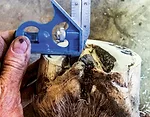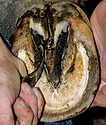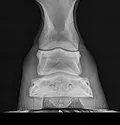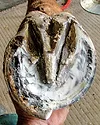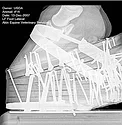Advertise Follow Us
American Farriers Journal

View Archived Issues
March 2017
Volume: 43
Edition: 2
American Farriers Journal is the “hands-on” magazine for professional farriers, equine veterinarians and horse care product and service buyers.
-
Table Of Contents
Table Of Contents
Taking the Time With Each Horse
Decades into his farrier career, Drew Golden still looks for every opportunity to learn from the horseRead MoreAttendees Applaud “Outstanding” Summit
Footcare professionals soak up 4 days of “inspiring” educationRead MoreGuarding Against Springtime Laminitis
Educating clients and being vigilant for early warning signs can head off this potentially deadly maladyRead MoreEmploy Alternative Trimming Methods to Manage Ailments
Proactive approaches can help resolve distortion and related lamenessesRead MoreGet a Leg Up On Common Foot Woes
Hoof-care professionals share strategies to prevent and stop thrush and white line diseaseRead More9 For the Ages
Six farriers and three veterinarians were elected to their respective Halls Of Fame at the 2017 International Hoof-Care Summit.Read MoreFarriers Recognized As Future Footcare Leaders
Three farriers were honored at the 2017 International Hoof-Care Summit for making remarkable progress in their footcare careers just 3 years out of shoeing school.Read MoreKeeping Polo Athletes Competing
The dos and don’ts of trimming and shoeing these hard working horsesRead More5 Key Points Help Clear Up Radiographs for Farriers
North Carolina vet finds these tips improve understanding and communicationRead MoreBalance and the Basics
Farrier Shayne Carter highlights several cases from his work to remind farriers it usually comes down to the basicsRead MoreEfforts To End Soring Travel A Long And Winding Road
Final horse protection amendments await Trump administration decisionRead MoreResearch Journal: March 2017
The information, ideas and opinions expressed are those of the author and do not necessarily represent those of the United States Department of Agriculture.Read More -
Featured Articles
Featured Articles
Taking the Time With Each Horse
Decades into his farrier career, Drew Golden still looks for every opportunity to learn from the horseRead MoreEmploy Alternative Trimming Methods to Manage Ailments
Proactive approaches can help resolve distortion and related lamenessesRead MoreGet a Leg Up On Common Foot Woes
Hoof-care professionals share strategies to prevent and stop thrush and white line diseaseRead More - Digital Edition
-
Online Extras
Online Extras





